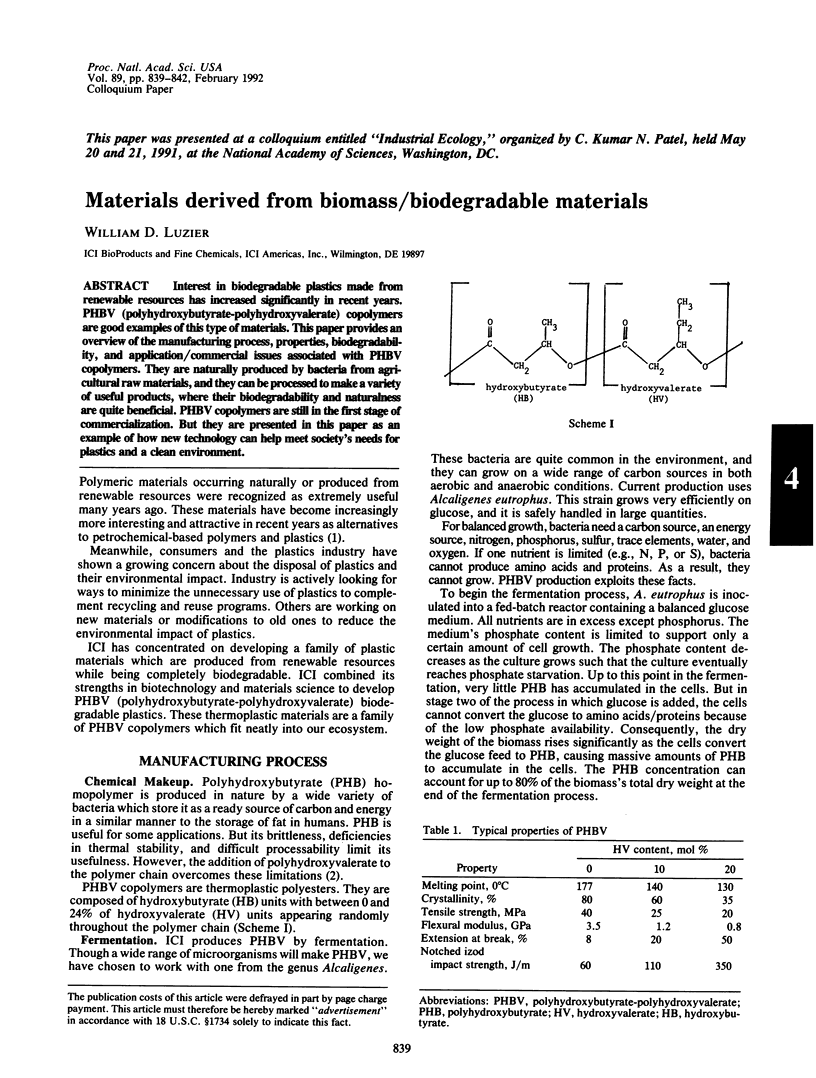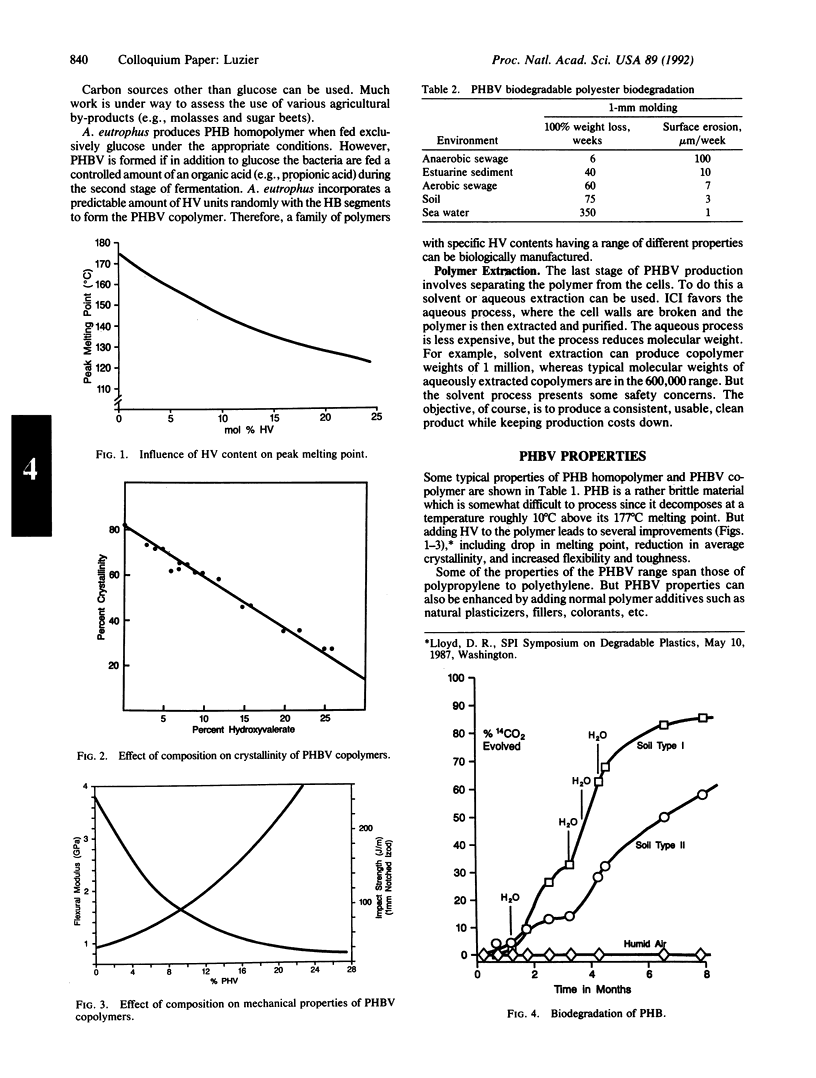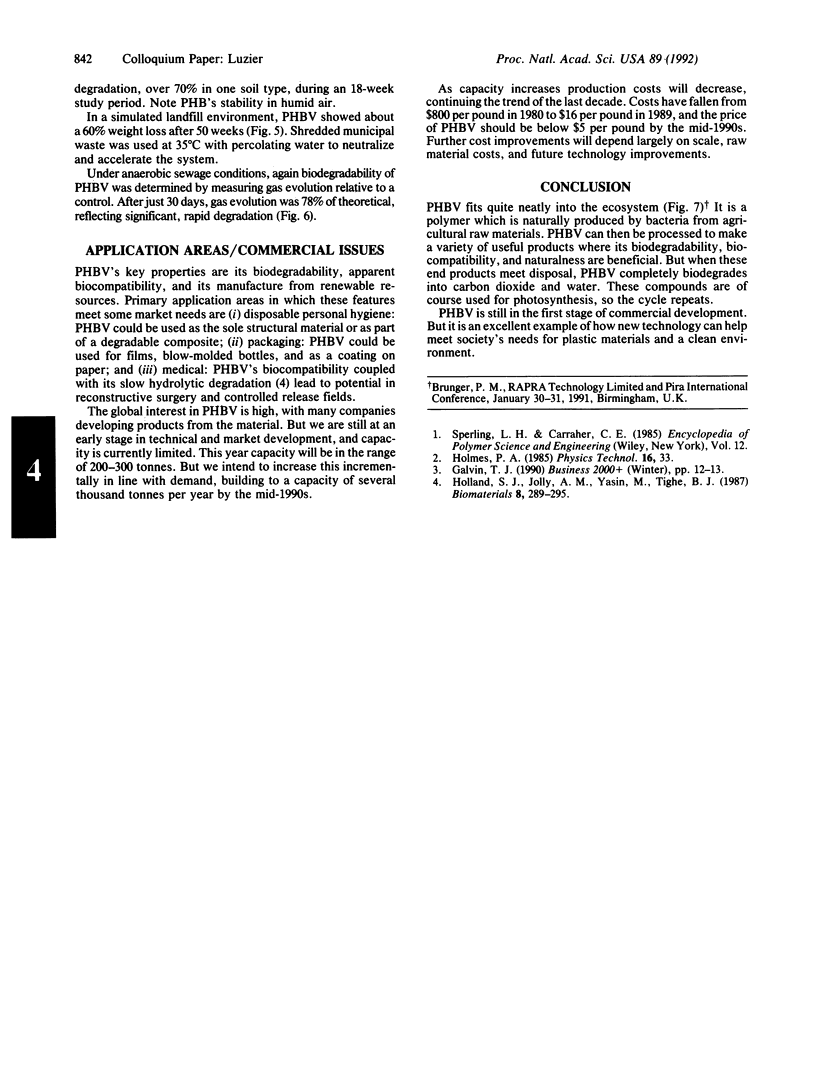Abstract
Interest in biodegradable plastics made from renewable resources has increased significantly in recent years. PHBV (polyhydroxybutyrate-polyhydroxyvalerate) copolymers are good examples of this type of materials. This paper provides an overview of the manufacturing process, properties, biodegradability, and application/commercial issues associated with PHBV copolymers. They are naturally produced by bacteria from agricultural raw materials, and they can be processed to make a variety of useful products, where their biodegradability and naturalness are quite beneficial. PHBV copolymers are still in the first stage of commercialization. But they are presented in this paper as an example of how new technology can help meet society's needs for plastics and a clean environment.
Full text
PDF



Images in this article
Selected References
These references are in PubMed. This may not be the complete list of references from this article.
- Holland S. J., Jolly A. M., Yasin M., Tighe B. J. Polymers for biodegradable medical devices. II. Hydroxybutyrate-hydroxyvalerate copolymers: hydrolytic degradation studies. Biomaterials. 1987 Jul;8(4):289–295. doi: 10.1016/0142-9612(87)90117-7. [DOI] [PubMed] [Google Scholar]



